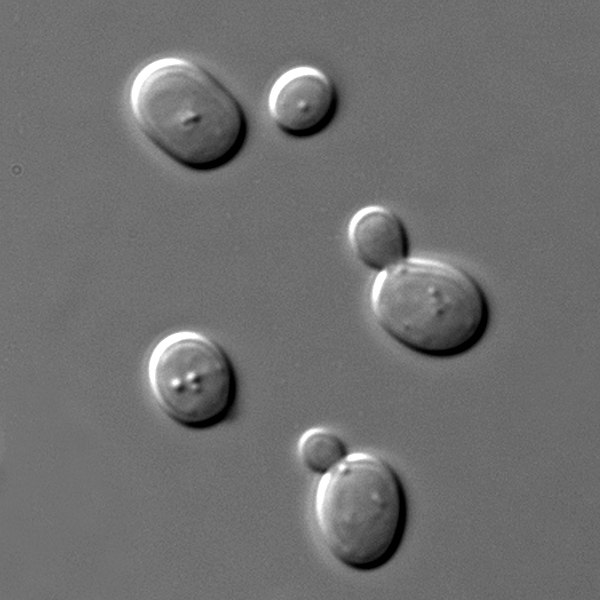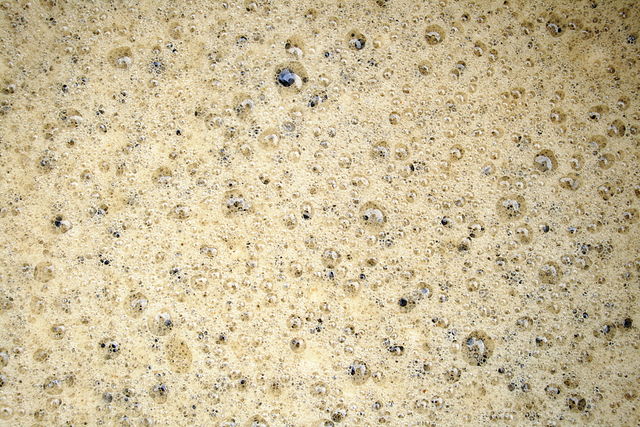Baker's yeast is the common name for the strains of yeast commonly used in baking bread and other bakery products, serving as a leavening agent which causes the bread to rise by converting the fermentable sugars present in the dough into carbon dioxide and ethanol. Baker's yeast is of the species Saccharomyces cerevisiae, and is the same species as the kind commonly used in alcoholic fermentation, which is called brewer's yeast or the deactivated form nutritional yeast. Baker's yeast is also a single-cell microorganism found on and around the human body.
Saccharomyces cerevisiae, the yeast commonly used as baker's yeast. Gradation marks are 1 μm apart.
A block of compressed fresh yeast in its wrapper
Active dried yeast, a granulated form in which yeast is commercially sold
A single grain of active dry yeast. The numbered ticks on the scale are 230 μm apart.
Yeasts are eukaryotic, single-celled microorganisms classified as members of the fungus kingdom. The first yeast originated hundreds of millions of years ago, and at least 1,500 species are currently recognized. They are estimated to constitute 1% of all described fungal species.
Yeast
Yeast ring used by Swedish farmhouse brewers in the 19th century to preserve yeast between brewing sessions.
Bubbles of carbon dioxide forming during beer-brewing
Yeast in a bottle during sparkling wine production at Schramsberg Vineyards, Napa








